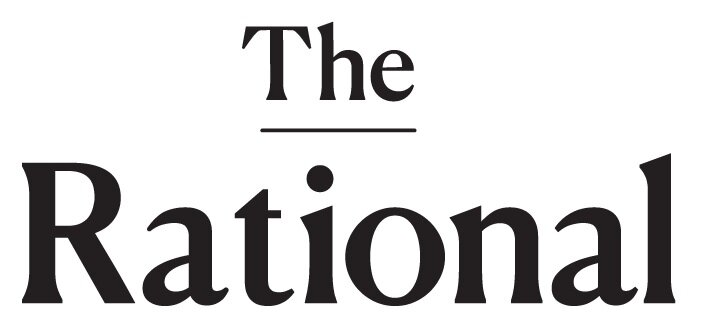Migraine Patients Are Being Forced to Jump Through Hoops To Access Life-Changing Medicine
And I'm over it.
Credit:
National Cancer Institute
When I first started getting migraines in 2015, I thought they were just unfortunate bouts of stomach flu. But it turned out to be much worse than that.
My head pounded and I'd spend hours vomiting, unable to keep down even water. I was calling in sick to work all the time, often multiple times a month and sometimes for a couple of days at a time. At home, I'd lay in bed unable to do anything other than struggle to fall asleep.
It wasn't until I finally went to the doctor a year later that I was diagnosed with migraines, a condition that still plays a big role in my life.
Not many people know that migraine is the third most common ailment in the world. In the U.S., it affects more than 29.5 million Americans.
Referred by one study as “the most common disabling brain disorder,” migraine doesn’t just impact individuals who suffer from it. In the U.S., more than 157 million days of work are lost annually because of migraines. The combined cost of healthcare and productivity lost due to migraines is estimated to total roughly $36 billion. That’s a lot of money lost from what people unfamiliar with the painful condition often think of as just “bad headaches.”
Yet, so far there have been only a limited number of migraine medications available on the market, and many of those are focused on treating the symptoms of migraine rather than preventing them from actually occurring.
This neglect is partly due to the stigma that has long enshrouded migraine. While I’ve been fortunate to have understanding bosses, coworkers and friends, I’ve also grappled with a lack of understanding about the condition, from people commiserating that sometimes they get headaches, too, or asking if I’ve ever tried Excedrin (right now, I have four different prescription medications that I take).
Like most underdiagnosed diseases, for decades migraine was considered “more of a hysterical women’s disease and not really given the respect it really deserves,” Susan Broner, the medical director of the Headaches Program at the NewYork-Presbyterian/Weill Cornell Medical Center, told The Washington Post.
Additionally, migraine can be difficult to treat as it is largely invisible pain and different people have varying migraine triggers and responses to medications. Research for the disease has also been grossly underfunded.
The good news is that scientists are finally starting to make headway. In May 2018, the FDA approved Aimovig — the first drug that’s ever been specifically designed to prevent chronic migraines from occurring.
That same month, another drug called Amgen was approved, and just months later two other similarly functioning drugs — Emgality and Ajovy — came out. Another might soon be on the way, with trials currently being done on a medication called rimegepant, which works as a pill instead of an injection like most of the other developed medications.
This new class of migraine drugs work by blocking transmission of calcitonin gene-related peptide (or CGRP), a protein that researchers found in high levels in people with severe migraine attacks. After multiple clinical trials, all four drugs have been found to lower the number of days a person suffers a migraine by at least two days each month. One migraine sufferer told Time that Aimovig made a "night and day difference" for her.
Before these recent migraine-specific drugs, migraine patients were largely prescribed drugs for depression, high blood pressure and even epilepsy. This has led to varying results and less than desirable side effects for sufferers of the disease.
Yet, many patients are still unable to get the relief these innovative new drugs offer.
For starters, the new drugs are prohibitively expensive. Aimovig, for instance, costs $575 a month — which adds up to nearly $7,000 a year. This makes the drugs virtually unaffordable for people who don’t have insurance or whose insurance does not cover these drugs.
To help offset the cost, drug manufacturers are offering financial assistance programs that last up to 12 months for those who either don’t have insurance or have inadequate coverage. But it’s unclear what the future of these programs will be, some of which are only offered to new prescribers to cover a certain number of doses or will only cover the drug costs for a certain period of time.
Another hindrance for migraine patients to access the new medications is the complicated process required by insurance providers to obtain the drugs. Patients often must have a certain number of “headache days” each month and have virtually exhausted all other (typically cheaper) migraine treatments to be prescribed one of the new drugs.
In my own experience, I had to try certain medications to prove they were not effective before my doctor could prescribe a different medication. I tried upwards of seven different medications over the span of two years before finally finding a combination of drugs that actually abated my migraines.
Frustratingly, this struggle to get treatment isn’t new for most migraine sufferers. With triptans — one of the classes of migraine medications most commonly prescribed — patients are typically limited to a small number of doses each month. Patients who have more than three migraines a month — which is not at all uncommon for migraine sufferers — are then forced to pay a higher out-of-pocket cost for additional doses.
All these frustrating hurdles that have been put in place by health insurance companies have serious consequences for patients. By forcing migraine sufferers to jump through hoops to get the treatment they need and making access to these new migraine drugs so constricted, insurance companies invalidate the needs of migraine sufferers as a legitimate patient group.
In some cases, it can discourage migraine sufferers from seeking treatment because the process is so complicated, and it also perpetuates the stigma against patients like myself that our debilitating condition is not a serious illness.
With more treatments emerging, from CGRP receptors to innovative new therapies, a long-overlooked group of patients are finally getting the options we need to help us live normal lives. But thanks to insurance companies, all we may be getting is more headaches.











